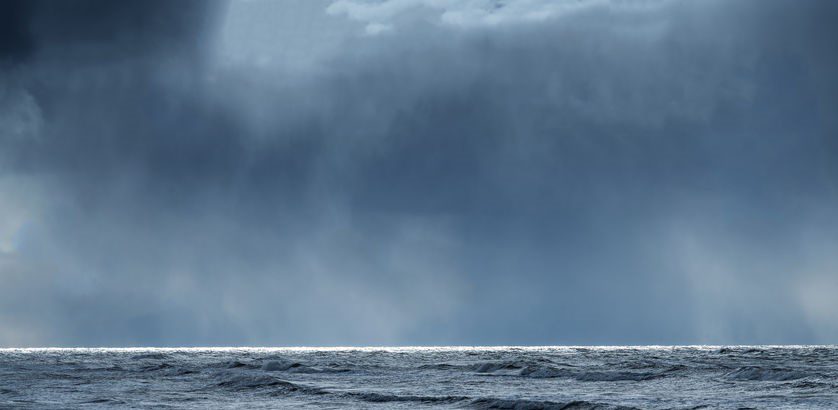Until the Storm Passes
Lessons in Taking Control

This is a sailing story, but it’s not really about sailing. It’s about what you need to do to get yourself through this crisis.
Out in the middle of the Chesapeake Bay, you see nothing but water and sky. Land long ago faded out of sight behind you, as did human sounds. It’s just you and your sailboat, dipping in and out of whitecaps, dancing the breeze. Firm hand on the tiller, holding the boat at a 15-degree-or-so angle: this is bliss for a sailor.
That is, until your ever-scanning eye catches sight of approaching darkness on the horizon. You zero in, noting its direction of movement, and swallow the slight terror that rises in your throat. It’s coming. Fast.
On this Bay, the largest estuary in the United States, squalls can travel a hundred miles or more, whipping themselves into a frenzy before finding other squalls and uniting in a line that ravages everything in its destructive path. A sailor can see it go from glassy to gale force in a matter of minutes.
You watch darkness expand until it fills your view. The water becomes dark green, stirred, and choppy. Your boat braces and leans away. The wind is suddenly cool against your sunned body. Large raindrops begin to hit. The horizon disappears in a blur of grayness. You can barely see beyond your bow.
You consider your options. It’s at least twenty feet deep, so anchoring is not possible. There is no nearby port. No other vessels. You’re in it alone and there’s no escape. You don’t like it, but you don’t have a choice. You’ve got to weather it.
The rain is blowing sideways as you move quickly to furl the jib, stow loose cushions, and close the hatch. As you pause to zip your life jacket, a gust of wind roars and slams into your big mainsail, knocking your boat to its side momentarily. As she swings back up and into the wind, you rush forward to lower the mainsail. But here’s your quandary.
If you take down the last of your sail, you’ll be unable to steer your boat. Without force on the sail, the rudder is useless. You would be adrift, at the full mercy of the wind and the waves. Your boat would be blown broadside and likely swamped.
Understanding this, you quickly crank in the mainsail until you have the smallest possible triangle remaining—smaller than a bandana—but it’s enough to keep pressure on the rudder so you can steer the boat into the wind.
Even with that tiny sailcloth, it takes incredible strength to muscle the rudder against the wind. It’s exhausting, and you wonder if you can do it, but what other choice do you have? Blinded by the rain and deafened by the wind, all you can do is point your boat into the wind until the storm passes.
And the storm always passes.
First, you notice an easing on the rudder. Then you feel the boat righting herself and settling. The sun breaks through and makes the water sparkle. You look around: some lines are askew and one of your shoes is missing, but everything that matters is intact. Dripping wet, but okay.
On the Chesapeake Bay and in life, storms come. Storms go. Your vessel was built to handle storms. By choosing to keep a tiny bit of sail up, you stayed in control. You were able to direct your boat to safety.
In a crisis, “keeping some sail up” so you can stay in control can look like this:
- Limit your exposure to negative news
- Increase your self-care so you have the necessary strength
- Gain a new skill or credential
- Explore and expand relationships
- Make a major pivot
- Deepen your spiritual or religious practices
- Start a positive new habit
Own your power of choice and take control of your experience. No matter what, don’t give in. Don’t surrender to the storm. Don’t acquiesce and do nothing. Don’t be a victim. Don’t go adrift.
Do anything—no matter how small!—to move your life forward. Keep some sail up.
***
Whole-being well-being expert, Liz Garrett, translates scientific and metaphysical principles into PRACTICAL APPLICATION tools and practices.

Leave a Reply